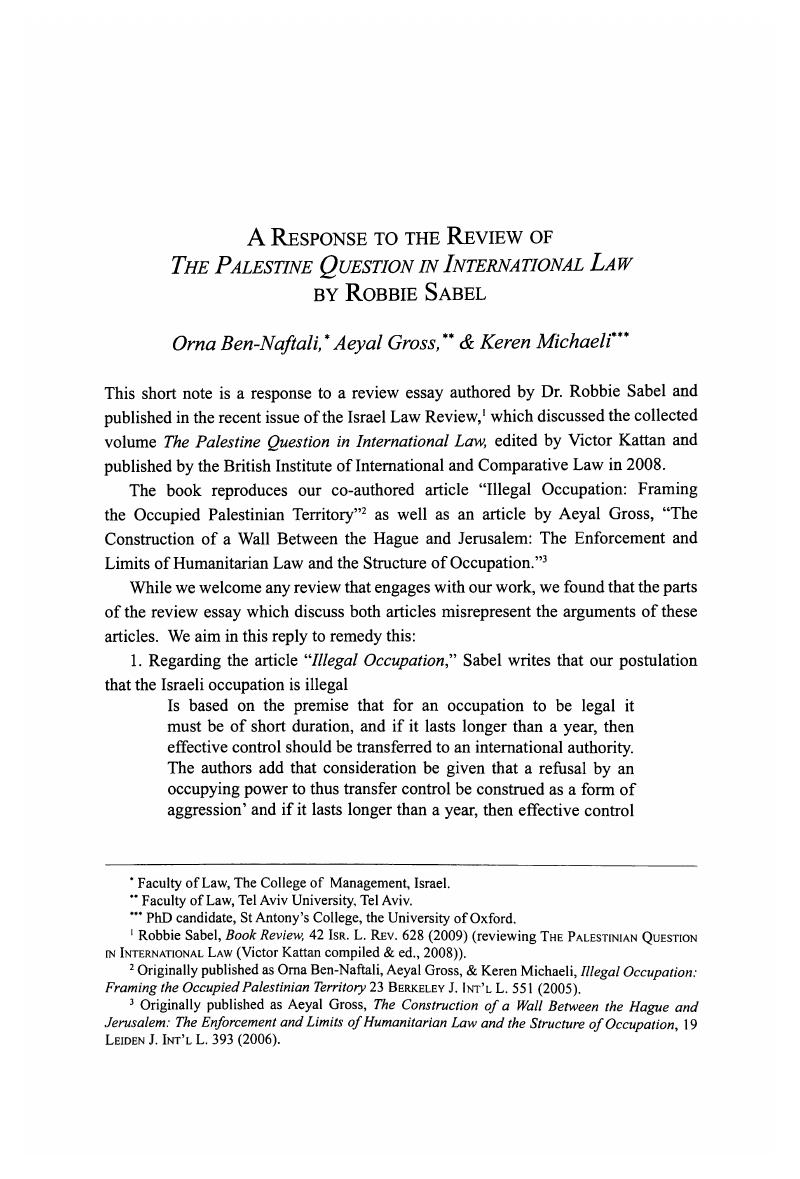Published online by Cambridge University Press: 19 March 2012

1 Sabel, Robbie, Book Review, 42 Isr. L. Rev. 628 (2009)CrossRefGoogle Scholar (reviewing The Palestinian Question in International Law (Victor Kattan compiled & ed., 2008)).
2 Originally published as Ben-Naftali, Orna, Gross, Aeyal, & Michaeli, Keren, Illegal Occupation: Framing the Occupied Palestinian Territory 23 Berkeley J. Int'l L. 551 (2005)Google Scholar.
3 Originally published as Gross, Aeyal, The Construction of a Wall Between the Hague and Jerusalem: The Enforcement and Limits of Humanitarian Law and the Structure of Occupation, 19 Leiden J. Int'l L. 393 (2006)CrossRefGoogle Scholar.
4 Sabel, supra note 1, at 630-31.
5 Id.
6 See Naftali, Gross, & Michaeli, supra note 2, at 553-57.
7 In his rejoinder to our reply Sabel asserts that “the main thrust of the original Article, referred to the temporal element of the occupation,” once again ignoring the fact that our thesis regarding the illegality of occupation rests on three elements, temporality being one of them. See Sabel, Robbie, Rejoinder to Joint letter of Orna Ben-Naftali, Aeyal Gross, and Keren Michaeli, 43 Isr. L. Rev. 256 (2010)CrossRefGoogle Scholar.
8 See Naftali, Gross, & Michaeli, supra note 2, at 613.
9 See Gross, supra note 3, at 405-11, 413-30.
10 While Sabel argues, in his rejoinder, that his review “devoted considerable space to the settlement issue but obviously could not repeat it in relation to every Article in the book that referred to settlements,” as explained in the text, the issue of the settlements is crucial to the arguments in both articles, and it is impossible to do justice to the articles while ignoring the part of the argument that pertains to the illegality of the settlements, as well as the dispossession entailed in them. See Sabel, supra note 5, at 256.